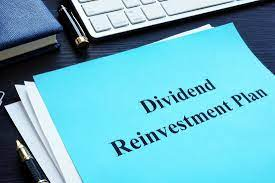Introduction –
Dividend Reinvestment Program, also known as DRIP, is a popular investment option for investors looking to grow their wealth over time. DRIPs allow investors to reinvest their dividend payments back into the same company, thus increasing the number of shares they own. In this article, we will explain what DRIPs are, their benefits, drawbacks, and provide examples to help you understand how they work.
What is a Dividend Reinvestment Program?
A Dividend Reinvestment Program is an investment plan that allows investors to reinvest their dividend payments back into the same company. Instead of receiving a cash payment, investors receive additional shares of the company’s stock. This program is a simple and effective way to reinvest your dividends and compound your returns over time.
Benefits of Dividend Reinvestment Program – DRIPs offer several benefits to investors, including:
1) Compounding Returns – DRIPs allow you to reinvest your dividends back into the same company, which can lead to compounding returns over time. The more shares you own, the more dividends you will receive, which can be reinvested to purchase more shares.
2) Automatic Investing – DRIPs are an automatic way to invest in a company. Once you enroll in the program, the company will automatically reinvest your dividends back into the stock.
3) No Brokerage Fees – Many companies offer DRIPs with no additional fees or commissions. This means that you can reinvest your dividends without incurring any additional costs.
4) Fractional Shares – With DRIPs, you can reinvest your dividends in fractional shares. This means that even if you don’t have enough dividend income to purchase a full share, you can still reinvest in the company.
Example of DRIP –
Let’s say you own 100 shares of XYZ Company, which pays an annual dividend of $1 per share. At the end of the year, you would receive a dividend payment of $100. Instead of taking the cash payment, you choose to enroll in the company’s DRIP program. The $100 dividend payment would be used to purchase additional shares of XYZ Company at the current market price.
Let’s assume the market price of the stock is $50 per share, which means that you would be able to purchase two additional shares of the stock. Now you own 102 shares of the company, which would entitle you to an annual dividend payment of $102. If you continue to reinvest your dividends through the DRIP program, you would own even more shares of the company over time, leading to greater returns through compounding.
Drawbacks of Dividend Reinvestment Program – DRIPs also have some drawbacks that investors should be aware of, including:
1) Lack of Flexibility – DRIPs are an automatic investment plan, which means that you have little control over when and how your dividends are reinvested.
2) Concentration Risk – By reinvesting your dividends back into the same company, you may become overexposed to a single stock or industry.
3) Tax Implications – Even though you are not receiving cash payments, you will still be responsible for paying taxes on your dividend income. Additionally, if you sell your shares, you will be responsible for paying capital gains taxes.
Conclusion – Dividend Reinvestment Program is an effective way to compound your returns over time. By reinvesting your dividends back into the same company, you can grow your investment portfolio without incurring additional fees or commissions.
However, it’s important to be aware of the drawbacks of DRIPs, including lack of flexibility, concentration risk, and tax implications. Overall, DRIPs can be a great investment option for long-term investors looking to grow.



One Response